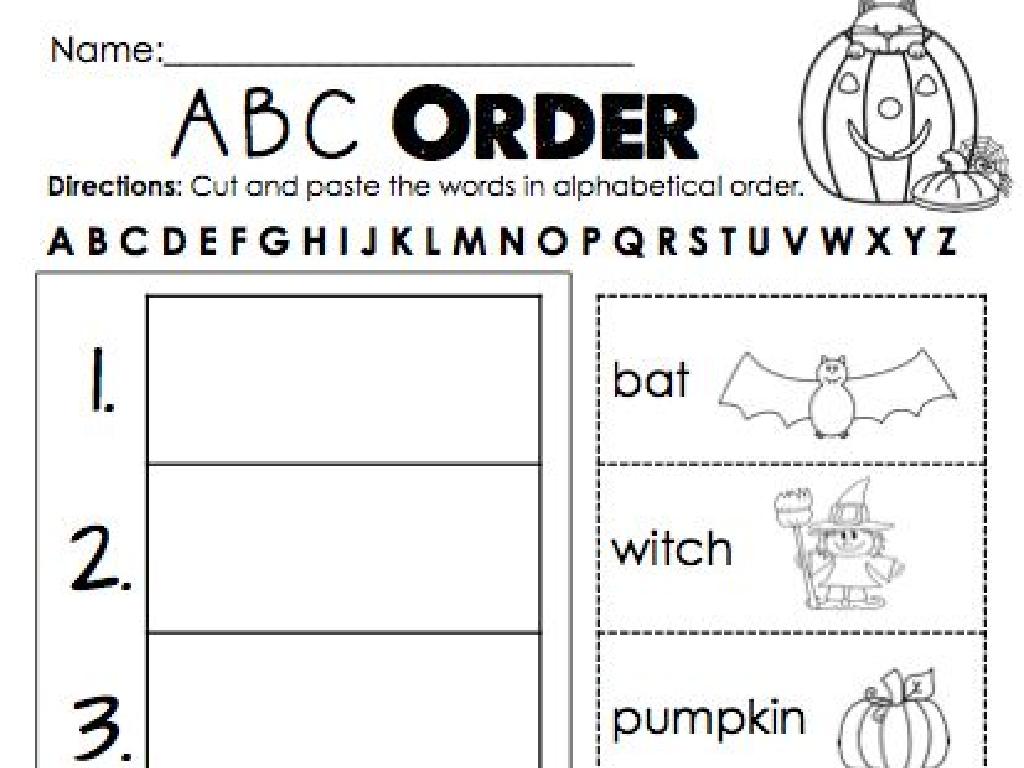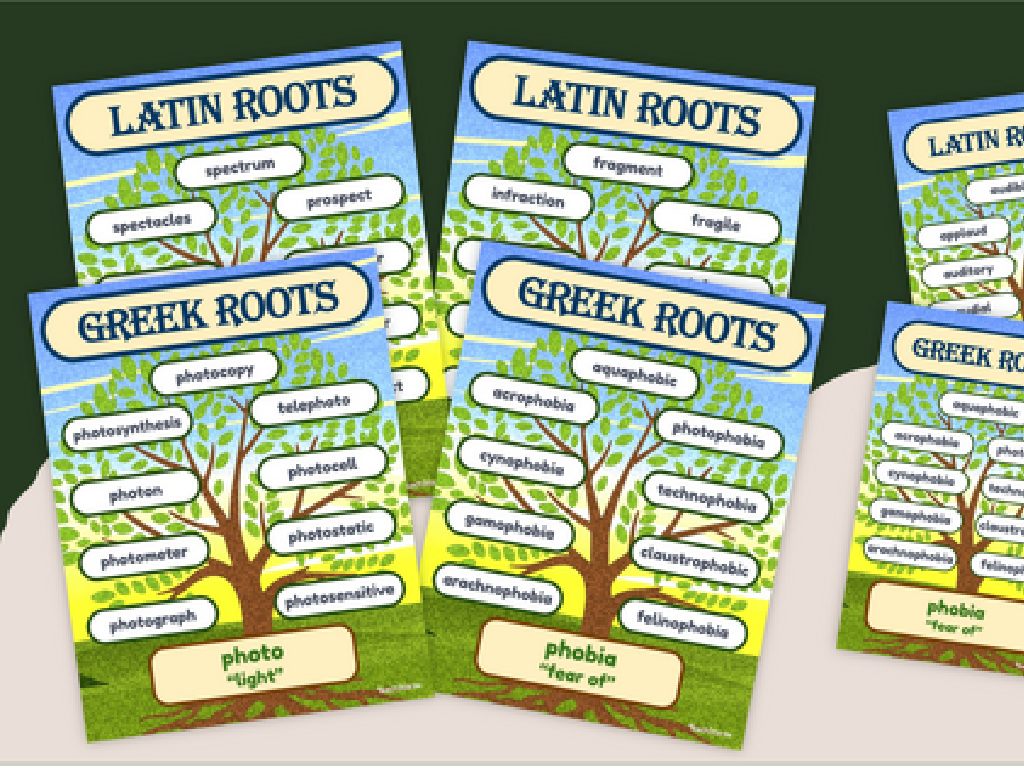Perimeter: Word Problems
Subject: Math
Grade: Third grade
Topic: Perimeter
Please LOG IN to download the presentation. Access is available to registered users only.
View More Content
Welcome to Perimeter Adventures!
– Greetings, young explorers!
– Today’s quest: Perimeter
– We’ll learn to find the perimeter of different shapes.
– Perimeter: Space around shapes
– Think of perimeter as a fence around a yard.
– Let’s measure perimeters together
– We’ll use addition to find the total length around shapes.
|
Good morning, class! Today, we embark on an exciting journey to understand the concept of perimeter. Perimeter is the total distance around the edge of a two-dimensional shape. Imagine walking around the edge of a playground that’s the perimeter! We’ll explore how to measure the perimeter of various shapes by adding the lengths of their sides. Encourage the students to think of real-life examples where they might need to measure perimeter, such as fencing a garden or framing a picture. Get ready to put on your explorer hats and dive into the world of shapes and their boundaries!
Exploring Perimeter with Word Problems
– Perimeter: total distance around
– Add lengths of all sides
– Example: Rectangle perimeter
– If a rectangle is 4 ft by 3 ft, perimeter is 2*(4+3) ft
– Practice with word problems
– How long is the fence around a garden?
|
This slide introduces the concept of perimeter as the total distance around a shape, which is a key concept in geometry for third graders. Start by explaining that perimeter can be found by adding the length of all sides of the shape. Use a rectangle as an example because it’s a shape they are familiar with. For instance, a rectangle with sides of 4 feet and 3 feet has a perimeter of 2*(4+3) feet, which equals 14 feet. Then, transition to word problems that apply this concept, such as finding the length of a fence around a garden, to make the learning practical and engaging. Encourage students to visualize and draw the shapes to better understand how to calculate the perimeter.
Perimeter of a Rectangle
– Add all four sides for perimeter
– Opposite sides are equal
– Example: 4 inches by 3 inches
– If one side is 4 inches and another is 3 inches, the other two sides are also 4 inches and 3 inches.
– Calculate the perimeter together
– Let’s add them up: 4+3+4+3 inches
|
This slide introduces the concept of finding the perimeter of a rectangle. Start by explaining that the perimeter is the total distance around the rectangle. Highlight that opposite sides of a rectangle have the same length, which simplifies our calculations. Use the example provided to show how to add the lengths of all four sides to find the perimeter. For the given example, demonstrate that since one pair of opposite sides is 4 inches each and the other pair is 3 inches each, the perimeter is 4+3+4+3, which equals 14 inches. Encourage students to find objects in the classroom shaped like rectangles and practice calculating their perimeters. Provide additional examples with different side lengths for homework.
Perimeter of a Square
– A square has equal sides
– Perimeter equals one side times 4
– Example: Side is 5 inches
– If one side is 5 inches, then 5 inches x 4 sides = 20 inches
– Calculate the perimeter
– Practice with different side lengths
|
This slide introduces the concept of finding the perimeter of a square to third-grade students. Begin by explaining that all sides of a square are the same length. To find the perimeter, you simply multiply the length of one side by 4, since a square has four sides. Use the example provided to illustrate this concept: if one side of a square is 5 inches, the perimeter is 5 inches multiplied by 4, which equals 20 inches. Encourage students to practice this method by calculating the perimeter of squares with various side lengths. Provide additional examples and practice problems to reinforce the concept.
Perimeter Word Problems: Practice Time
– Word problems apply our knowledge
– Read to identify shape and sides
– Find the length of each side in the problem
– Solve perimeter problems together
– We’ll work as a class on example problems
– Use addition for total perimeter
– Add all side lengths to find the perimeter
|
This slide is designed to engage students in practicing perimeter word problems. Emphasize the importance of carefully reading the problem to understand the context and identify the shape in question, whether it’s a rectangle, square, or another polygon. Guide the students through the process of finding the length of each side mentioned in the problem. Work through example problems as a class, demonstrating how to add the lengths of all sides to find the total perimeter. Encourage students to participate and try solving the problems with guidance. Provide additional practice problems for students to work on individually or in groups, and be ready to assist them as they apply their knowledge of perimeter to real-world contexts.
Problem Solving: Perimeter Word Problems
– Calculate Emma’s garden perimeter
– Add all sides: 6ft + 4ft + 6ft + 4ft
– Find the sandbox’s fence length
– All sides equal: 7ft + 7ft + 7ft + 7ft
– Step-by-step problem-solving
– We’ll use addition to solve these problems
|
This slide is designed to engage students in solving real-world perimeter problems. Start by discussing Emma’s rectangular garden, guiding students to understand that perimeter is the total distance around the garden. They should add the lengths of all four sides to find the perimeter. For the square sandbox, emphasize that all sides of a square are equal, so they will multiply one side by four. Walk through each problem on the board, showing each step. Encourage students to draw the shapes and label the sides to visualize the problems better. Provide additional similar problems for practice and ensure to praise effort to build confidence.
Class Activity: Craft Your Perimeter Puzzle
– Draw a shape on paper
– Write a perimeter problem
Include measurements for sides
– Swap with a classmate
– Solve each other’s problems
Use addition to find the total perimeter
|
This activity is designed to engage students in creating their own math problems, which helps deepen their understanding of the concept of perimeter. Provide students with paper and encourage them to draw any polygon. They should then write a word problem that requires finding the perimeter of their shape. Remind them to include the measurements of the sides in their problem. Once they’ve written their problems, have them swap papers with a classmate and work on solving the new problem. This peer-to-peer activity not only makes learning fun but also allows students to think critically and practice their addition skills. Possible shapes include rectangles, squares, and triangles. Encourage creativity and ensure that each student understands the concept of perimeter as the total length around their shape.
Perimeter Explorers: Homework Time!
– Congratulations on your hard work!
– Complete perimeter problems worksheet
– Find the total distance around the shapes
– Practice is key to mastering perimeters
– The more you practice, the better you’ll understand
– Bring your completed worksheet next class
|
This slide is designed to wrap up the lesson on perimeter and to assign homework to reinforce today’s learning. The worksheet provided should contain a variety of word problems that require students to apply their knowledge of calculating perimeters. Encourage students to try their best and remind them that practicing these problems will help them become more confident in their ability to solve perimeter-related questions. Make sure to praise their efforts during the lesson and motivate them to continue practicing at home. In the next class, be prepared to review the homework, discuss any challenges students faced, and celebrate their successes.





